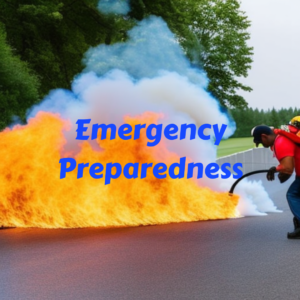Tourniquets are an essential piece of medical equipment for emergency situations where severe bleeding needs to be stopped quickly. There are several types of tourniquets available in the market, and choosing the right one can make all the difference. In this blog post, we’ll be comparing three popular tourniquets – the SWAT-T, the SOF-T, and the CAT7 – to help you make an informed decision.
- The SWAT-T Tourniquet
The SWAT-T tourniquet is a versatile tourniquet that can also be used as a pressure dressing, elastic bandage, or sling. It is made of a stretchable material that can be wrapped around the limb and secured with Velcro. The SWAT-T tourniquet is lightweight and compact, making it easy to carry in a first aid kit or medical bag.
One of the advantages of the SWAT-T tourniquet is its versatility. It can be used as a tourniquet, but also as a pressure dressing, elastic bandage, or sling, making it a valuable tool for medical professionals in emergency situations. It also can be used on any size limb, which makes it ideal for small children and dogs whose limbs are often too small for windlass tourniquets.
However, the SWAT-T tourniquet may not be as effective in stopping severe bleeding compared to other tourniquets. Its design does not allow for the same level of pressure that other tourniquets can achieve, which may limit its effectiveness in certain situations. The method of application also makes it very difficult to use for self-aid, especially on an arm wound.
- The SOF-T Tourniquet
The SOF-T tourniquet is a widely used tourniquet in the military and law enforcement communities. It is made of a durable material that can withstand extreme temperatures and harsh conditions. The SOF-T tourniquet has a buckle design that allows for quick and easy application, and it can be used on limbs of various sizes and even allows multiple SOF-Ts to be linked together fit extremely large limbs.
One of the advantages of the SOF-T tourniquet is its durability. It is designed to withstand extreme conditions, making it a reliable tool for military and law enforcement professionals. Its buckle design also allows for quick and easy application, which can be critical in emergency situations. This is especially true in a home or office setting where floors tend to be carpeted and the Velcro of the CAT7 can stick to the carpet and make application more difficult.
However, the SOF-T tourniquet may be more difficult to apply compared to other tourniquets. Its buckle design may require more skill and practice to apply effectively, which may limit its usefulness for individuals without medical training.
- The CAT7 Tourniquet
The CAT7 tourniquet is a widely used tourniquet in both civilian and military settings. It has a windlass design that allows for precise pressure control, and its Velcro closure ensures a secure fit. The CAT7 tourniquet also has a robust construction that can withstand extreme conditions.
One of the advantages of the CAT7 tourniquet is its windlass design, which allows for precise pressure control. This can be especially useful in situations where severe bleeding needs to be stopped quickly. Its robust construction also ensures that it can withstand extreme conditions, making it a reliable tool. Additionally, the Velcro closure is fairly easy to operate one handed with minimal training.
However, the CAT7 tourniquet’s expense makes it very prone to counterfeiting. For this reason CAT7s should only be purchased from a known reputable distributor such as North American Rescue or Refuge Medical (use code YTG at Refuge for a 10% discount at checkout). The stiffness inherent in the design can help the CAT7 retain its shape for staging, but we find that it also makes the CAT7 the most difficult of the three designs to carry discreetly in a small package.
Comparison
All three tourniquets are effective at stopping bleeding and can be used on upper and lower extremities. The SWAT-T is extremely compact, lightweight and versatile. The SWAT-T can also be used on limbs of any size, making it a good choice for smaller patients who cannot be treated with a windlass tourniquet. The CAT7 and SOF-T are easier to deploy, especially one handed and for self-aid, and designed to withstand extreme conditions and are durable enough to be reused multiple times. They can also apply most constricting pressure than the SWAT-T.
The SWAT-T is the most versatile of the three, as it can be used as a tourniquet, pressure bandage, or sling.
The SOF-T is the most durable and can withstand extreme conditions. It also has a metal windlass that allows for quick and easy application, making it an excellent choice for military and law enforcement personnel.
The CAT7 is the simplest of the three, making it easy to learn how to use and apply quickly and effectively. It is also the easiest to apply, making it an excellent choice for individuals who may need to apply it to themselves. Its construction is nearly as robust as the SOF-T and it has the most combat applications of any modern design with a solid track record of performance and durability.
Conclusion
When it comes to choosing a tourniquet, the SWAT-T, SOF-T, and CAT7 are all excellent choices. The best option for you will depend on your specific needs and the situations you may find yourself in. At YTG we tend to carry two tourniquets as part of our every day carry. Our stripped down bleeding control kit that will carry whenever we leave the house includes a SWAT-T for its versatility and compact design. The SWAT-T, 2 compact chest seals, a wound dressing, and a package of compressed hemostatic gauze all fit into a small pouch that will slip into most jeans pockets.
When we have a little more cargo space one of our founders prefers to add the SOF-T because it folds very small and fits easily in her purse and because it does not include Velcro will not stick to carpet in her environment or other objects in her purse. Our other founder prefers the CAT7 because its rigid design allows it to stage nicely in the magazine pouch built into the cargo pocket of his favorite pants and its ease of use makes him very confident in applying it under stress and possibly injured.
The bottom line is that you should be familiar with all three designs and carry the one or more that best suits your situation and needs. But because the CAT7 is by far the most common, that is the one we always make sure our Stop the Bleed students have mastered and is the one we would recommend buying first if you are trying to decide on your first tourniquet purchase.
If you are in mid-Michigan and need to learn to learn to use tourniquets and other bleeding control methods, contact YTD to learn about class options. We are based near Lansing and teach in surrounding areas.


